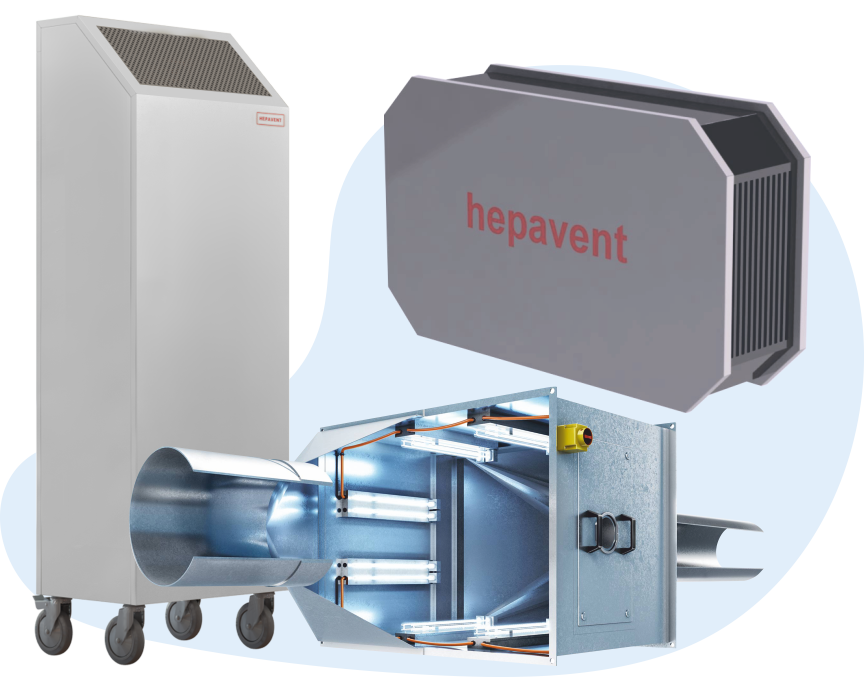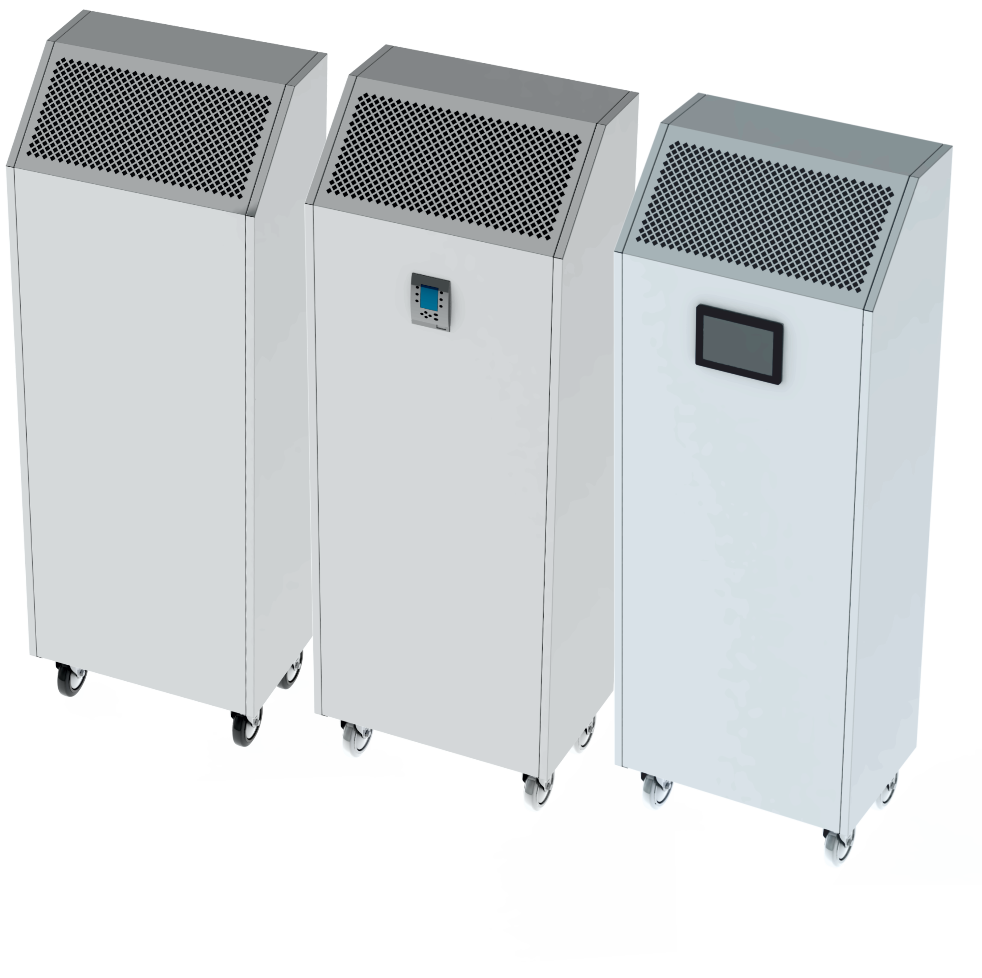Particulate matter (PM), whether in solid or liquid form, can impact our health. Particularly, particles smaller than 2.5 micrometers (μm), also known as microns, pose a risk because they can enter our bloodstream. Nanoparticles can be as small as 0.1 micrometers and can range up to 0.001 μm.
The belief that HEPA filters can only capture particles of 0.3 μm or larger is common, but this belief stems from a misunderstanding of how HEPA filters work. In reality, particles around 0.3 μm in size are the most challenging for HEPA filters to capture, which is why the effectiveness of HEPA filters is often measured using this size of particles. In fact, smaller nanoparticles are easier to capture. This is because the electrostatic and mechanical mechanisms used in the design of HEPA filters enhance their capture efficiency depending on the particle size.
For larger particles, a HEPA filter behaves like a sieve as expected. Particles larger than 0.3 μm cannot pass through: they either do not fit through the holes or collide with the filter fibers due to inertia. For smaller particles, it might seem logical that they can pass through the holes. However, this is not the case. Particles smaller than 0.3 μm do not fly straight; instead, they bounce off other molecules as they collide, moving in completely random patterns. As a result, they collide with the filter fibers and get trapped. This principle is known as Brownian motion.
NASA (1) tests have shown that HEPA filters are highly effective in capturing up to 100% of nanoparticulate contaminants as well as a very high percentage of particles larger than 0.3 microns. There is only a slight decrease in efficiency for particles around 0.3 microns; this size is known as the Most Penetrating Particle Size (MPPS) for HEPA filters.
According to European standards, there are 17 filter classes – the higher the class, the higher the efficiency.
Some filter classes are as follows
- E10 to E12 classes are Efficient Particulate Air (EPA) filters,
- H13 and H14 are HEPA filters, and
- U15 to U17 are Ultra Low Penetration Air (ULPA) filters.
- These classes evaluate the filtration performance of the filter for MPPS according to the European standard EN 1822.
- According to this standard, a HEPA filter must filter at least 99.95% of particles 0.3 μm or larger.
- US government standards require a filter to be classified as HEPA if it filters 99.97% of particles 0.3 μm in size.
Bacteria and virus sizes
Some well-known bacteria and viruses have the following sizes:
- Coronaviruses such as COVID-2019, MERS-CoV, and SARS-CoV range from 0.06 to 0.2 μm.
- Influenza A virus: 0.08 – 0.12 μm
- HIV: 0,08 μm
- Hepatitis C virus: 0.05 μm
- Mycobacterium tuberculosis: 1.0 μm
- Common staphylococci (e.g., Staphylococcus aureus) are approximately 1 μm in size, growing in clusters.
Yaşam Alanları
Solunum rahatsızlığı olanlar, Sık sık hastalananlar, Nefes darlığı çekenler, Alerjisi olanlar
Sağlık Alanları
Hastaneler, Laboratuvarlar, Dental alanlar, Doktor bekleme alanları, Moleküler çalışma alanları, Hematoloji üniteleri, Saç ekim merkezleri
Ticari ve Sosyal Alanlar
Alışveriş merkezleri, Ofisler, Banka Şubeleri, Spor Salonları, Kuaförler, Restaurantlar vb.
Eğitim Alanları
Okullar veOkul Öncesi Kurumlar, Oyun Alanları, Sosyal Eğlence Alanları, Oyun Eğitim Merkezleri, Öğretmen Odaları, Spor ve Soyunma Odaları
Keep Your Air Clean
Shopping malls, dormitories, cafeterias, schools, barracks, airports, and similar spaces have become crucial in terms of airborne and contact transmission, especially during pandemics like COVID-19 (coronavirus). Microorganisms that threaten human health can spread widely in these areas if preventive measures are not taken. Enhance your ventilation system with HEVAPENT products for maximum protection. Remember, improperly installed or incorrectly engineered systems themselves can become sources of contamination.
– Hospitals
– Laboratories
– Dental areas
– Respiratory sensitive and dusty environments
– Pathology workspaces
– Molecular workspaces
– Hematology units
– Smoking areas
– Post-transplantation areas
– Hair transplant centers
– Schools
– Shopping malls
– Hotels
– Bank branches
– Gyms
– Hairdressers
– Dental clinics
– Restaurants and fast food areas
Easier to Implement
Virus Bacteria Killing Machine
It removes airborne viruses, bacteria, particles and bad odours from the environment.
It is especially effective in COVID-19 virus.
HV EU model provides cleaning in a single cycle with its ESP technology and high dose special UVC lamps.
Unit models can clean an area between 67 and 170m².
The units are plug-and-play installation.
Although it contains industrial filter equipment, it works with 220V electricity.
Optional air quality data can be stored and transferred via USB.
There is no filter change in our high efficiency model containing UVC and ESP, it can be used continuously.
It can be used in any environment with its low noise level.
It is portable with its wheeled structure.
Can be ordered in special colours for bulk purchases





